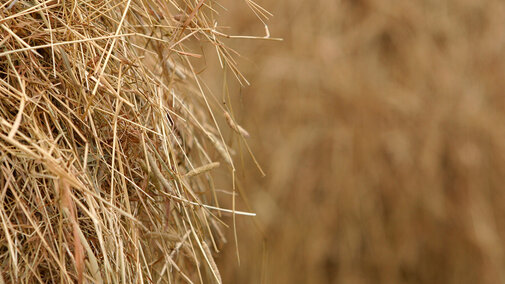Deciphering a Hay Test — Protein and Energy
All hay is not created equal. Two major values we often judge hay quality on are protein and energy, both of which vary from year to year and between crops. So how do we use these values when deciding what and how much hay to feed?
Protein values in hay tests are typically reported as percent Crude Protein (CP). This measures the nitrogen portion of the hay. Not only is this protein important for rumen microbes, it is also important for animal maintenance and growth.
When looking at hay energy values, one common measure often used is TDN or Total Digestible Nutrients. TDN is the sum of the digestible fiber, protein, lipid and carbohydrate components of a feedstuff.
Knowing TDN is useful especially for diets that are primarily forage. Without consideration, diets may be lacking energy as much or more than crude protein. Low energy diet can be as impactful to animal condition and performance as those lacking in protein.
Being familiar with how animal requirements for protein and energy change between animal class and with demands like pregnancy or lactation can help with decisions about how hay is fed. Keep in mind that in addition to these base demands, environmental conditions like temperature can impact animal needs in the short term as well. With this knowledge, we can feed lower quality hay to dry cows and save high quality hay for pairs at peak lactation or growing animals. This not only ensures animals are properly fed but can also help control feed costs.
Reducing Fed Hay Losses
By Brad Schick
Making, transporting and feeding hay is a large investment in time, equipment and money. How can you reduce loss of hay during feeding to make that investment go further?
There are many ways to feed hay, with each method impacting waste differently. If hay is fed unrestricted, cattle can waste 45% of the hay they are provided. Limit feeding hay so only what is required is fed will significantly reduce waste right away. Studies show that cattle fed daily versus fed every four days needed 25% less hay. That’s a huge amount, but labor and equipment cost slightly increased.
A common and usually labor efficient method of feeding is to feed hay directly onto the ground by unrolling bales, distributing ground hay or loose hay, and bale pod grazing. With any of these methods, there should only be enough feed distributed or available for one day.
Bale pod grazing is when bales are spread out across a field or pasture and temporary fence is used to confine animal access to one or several bales. When it’s time for more hay, the producer moves a fence instead of moving a bale. The losses will depend on herd size, however, because this relates to limiting feeding or limiting access.
Limiting access by physical barriers is another way to decrease hay loss. Bale rings, racks, fences, feed bunks, bale pod grazing or another form of limited access can all decrease waste. These methods work by reducing trampling and animal ability to lay down on the hay. The most effective physical barriers have solid side bottoms. This prevents the hay from being pulled out onto the ground. While these methods are effective, they require the purchase of additional equipment which for large herds or changing feeding location can add significant time and money.
No matter the improved method, reducing fed hay losses will improve the return on the hay investment.

